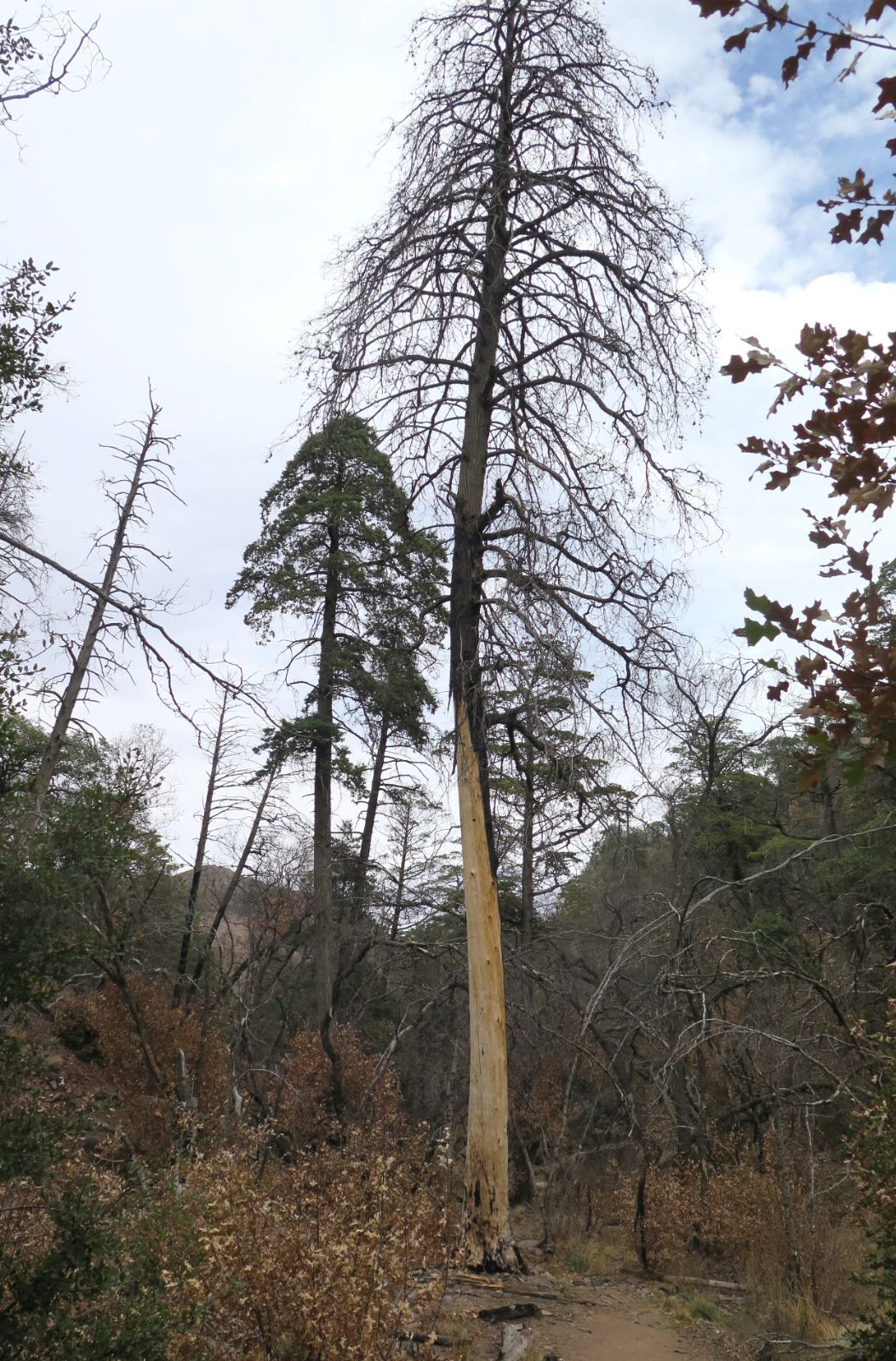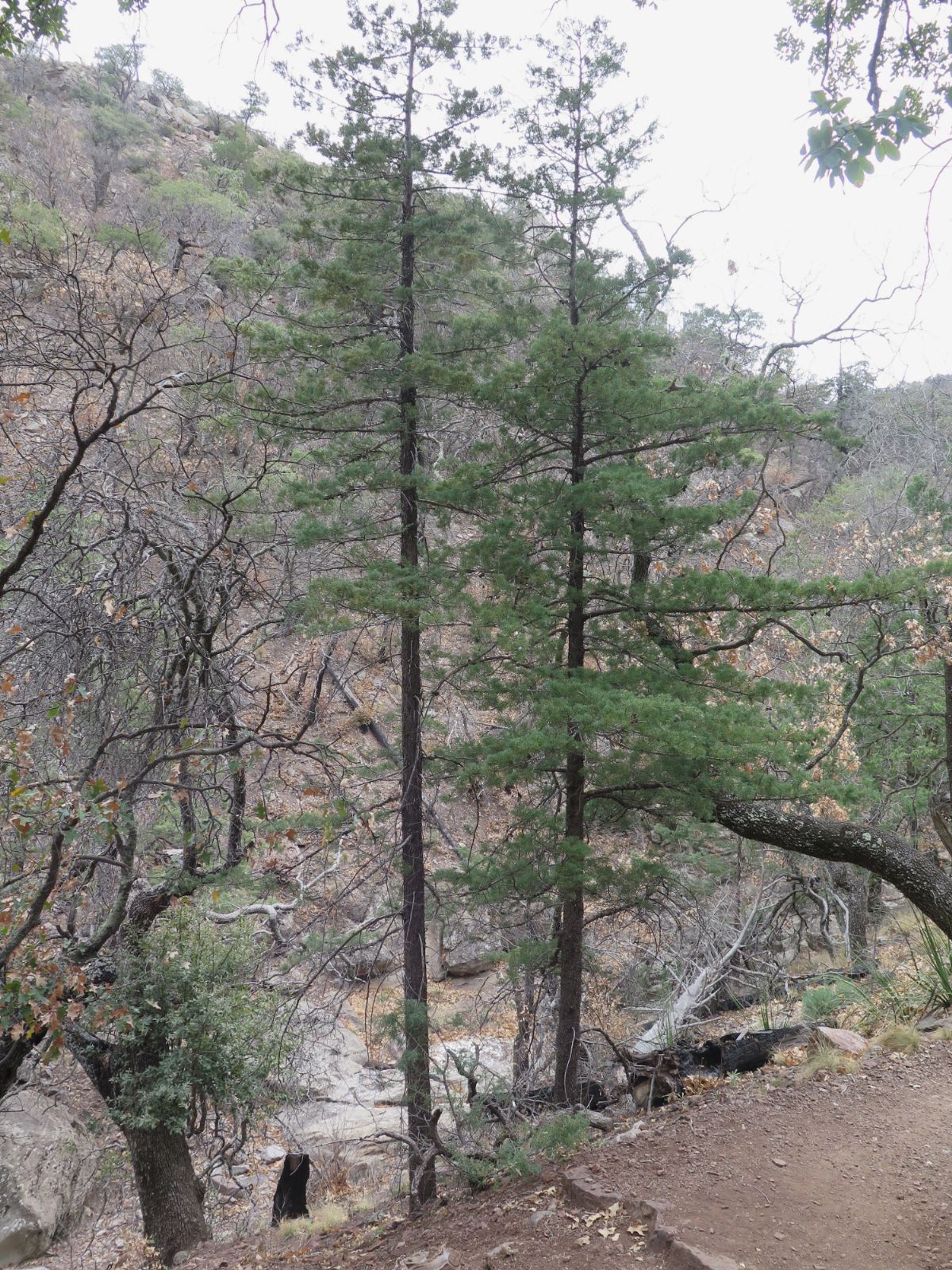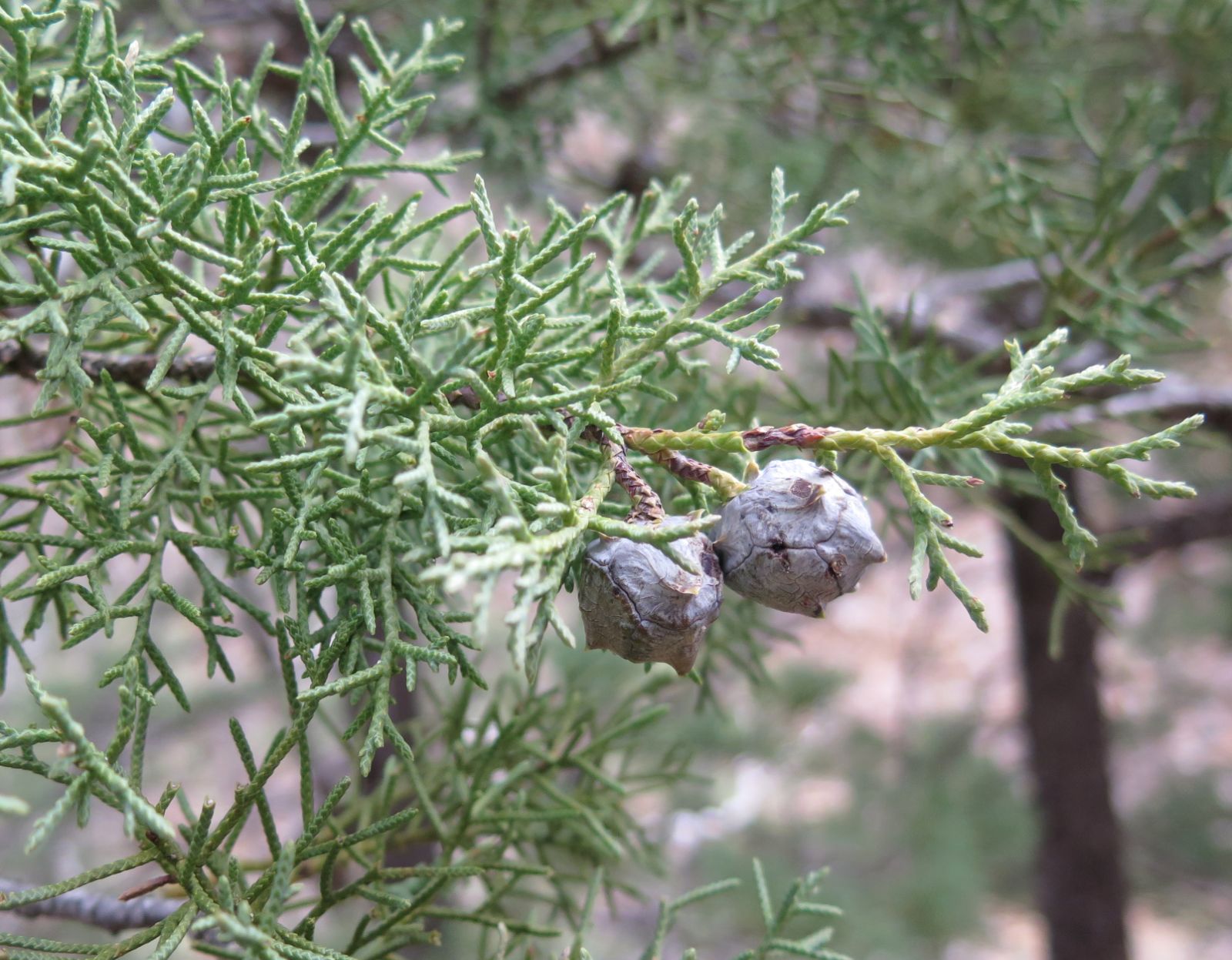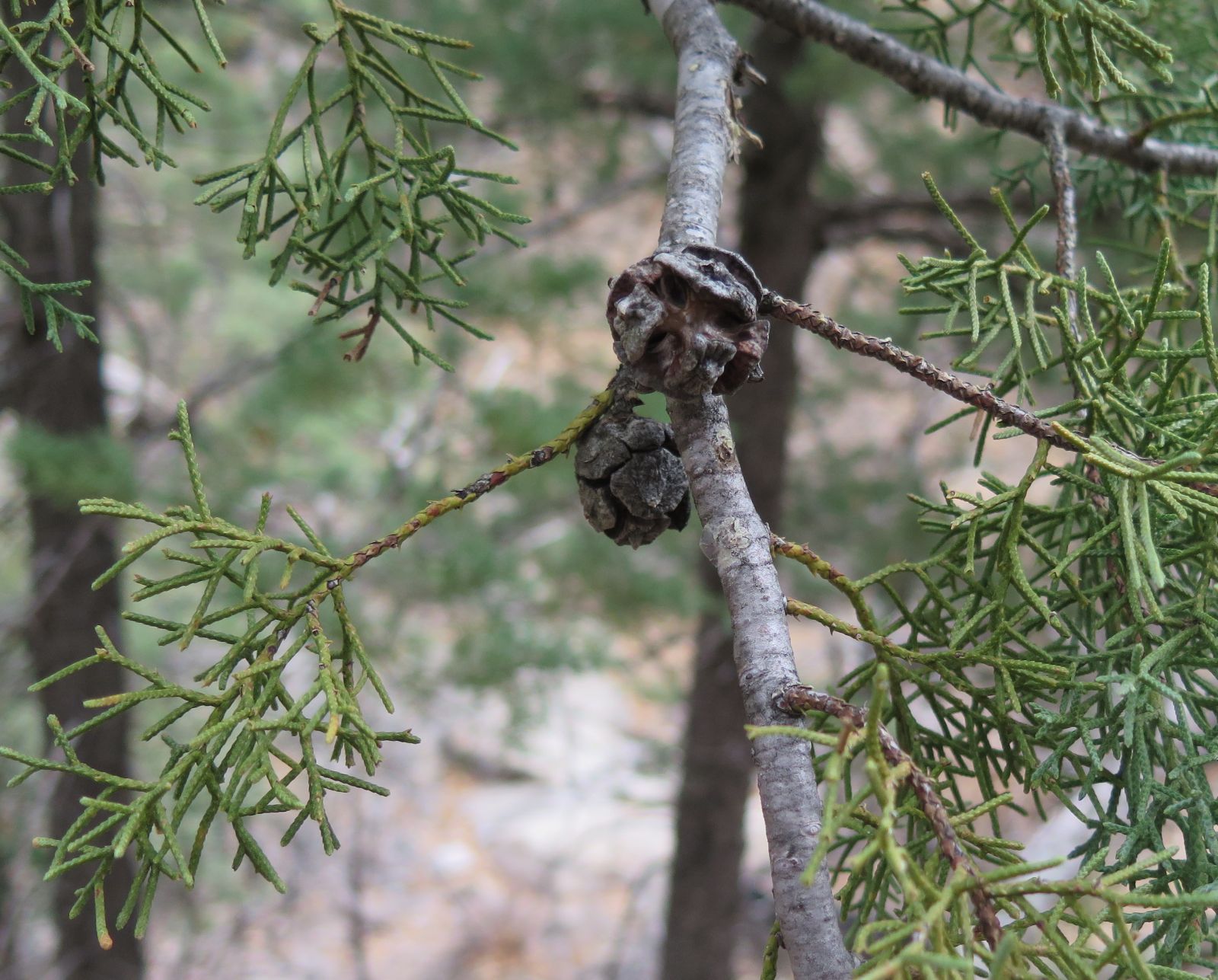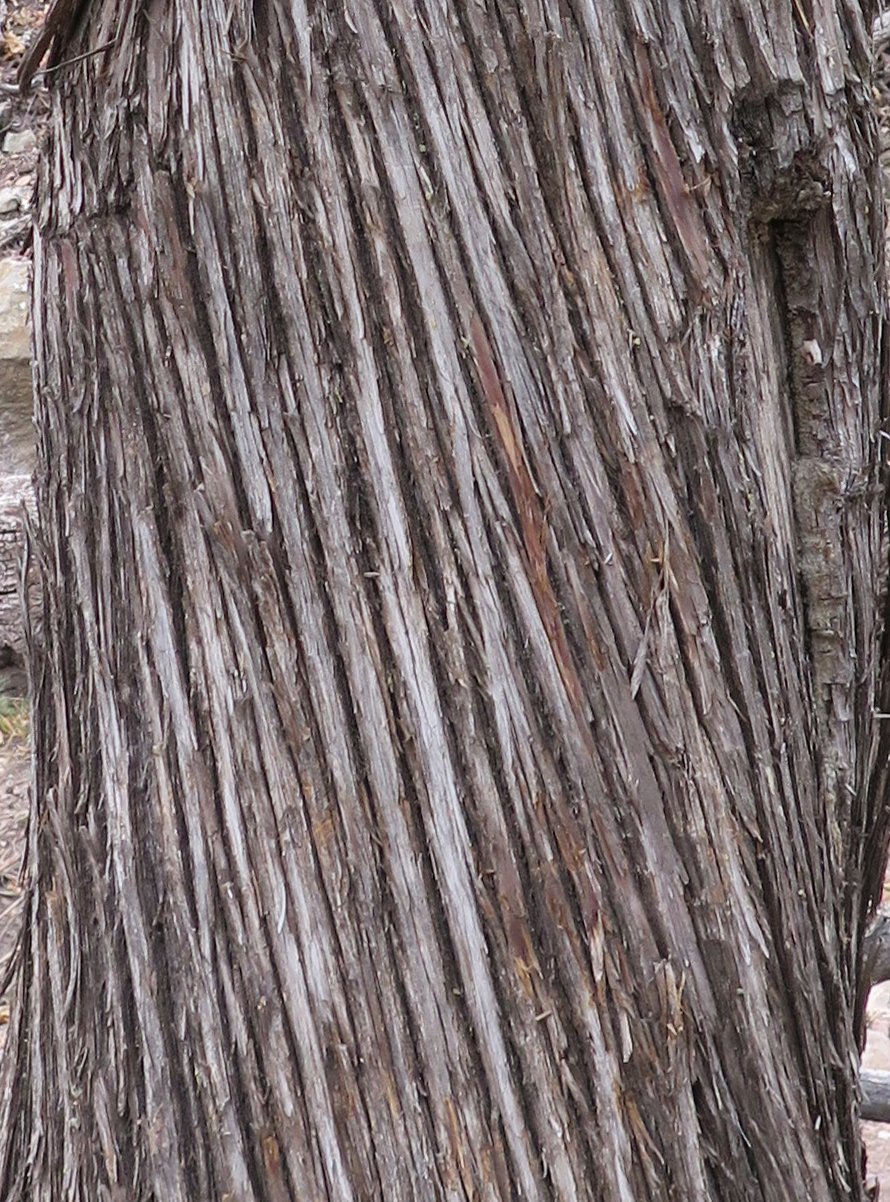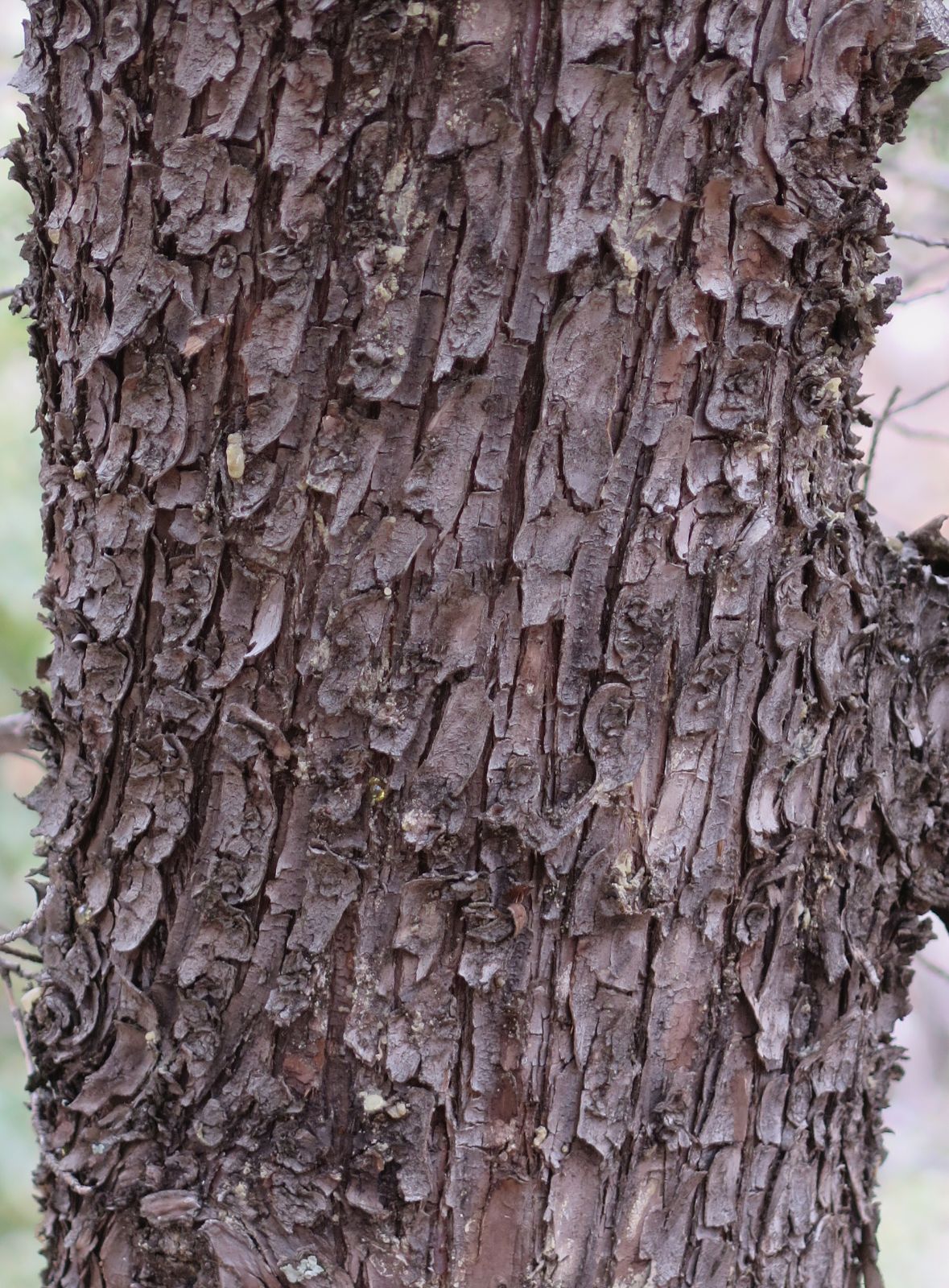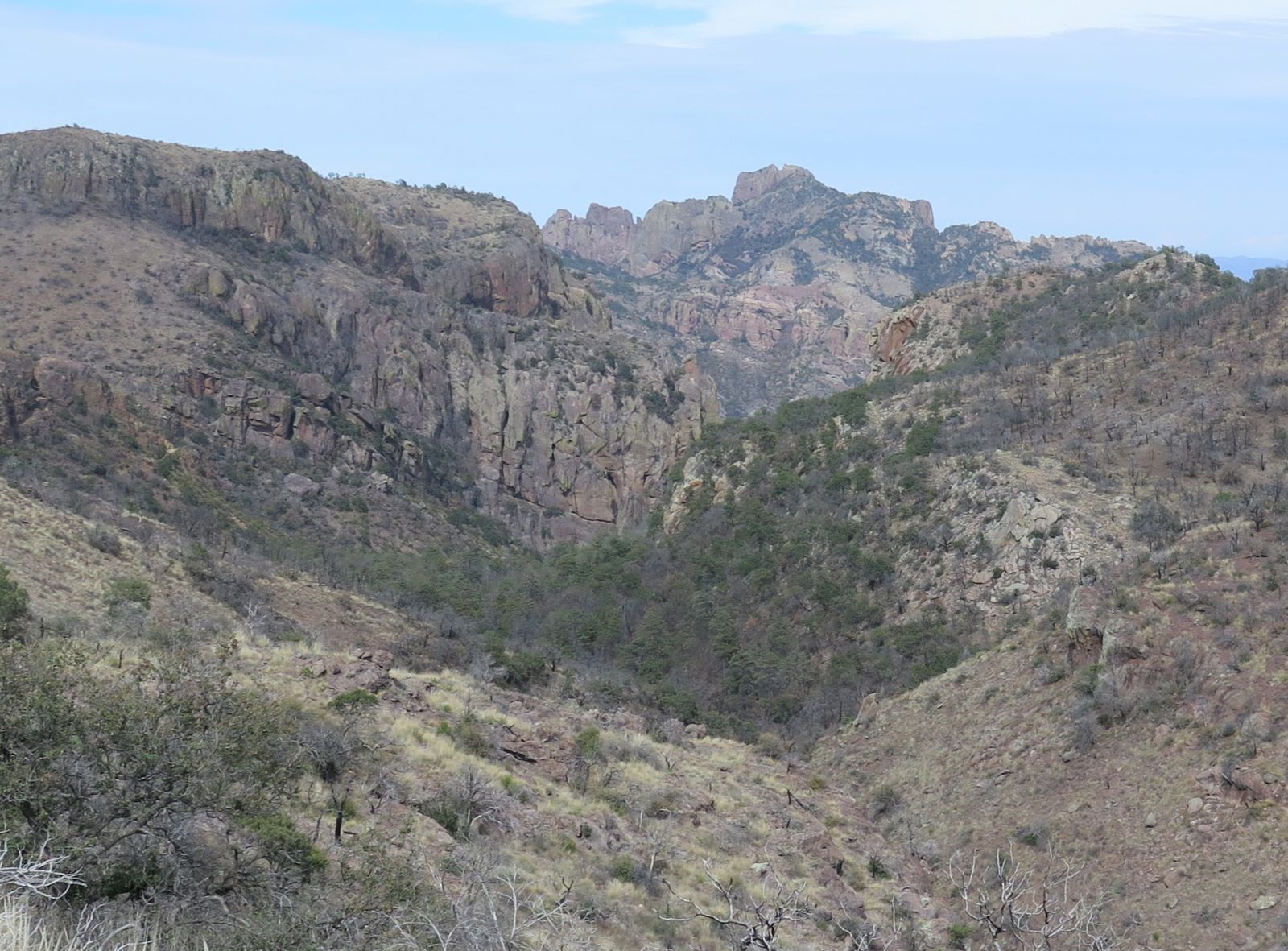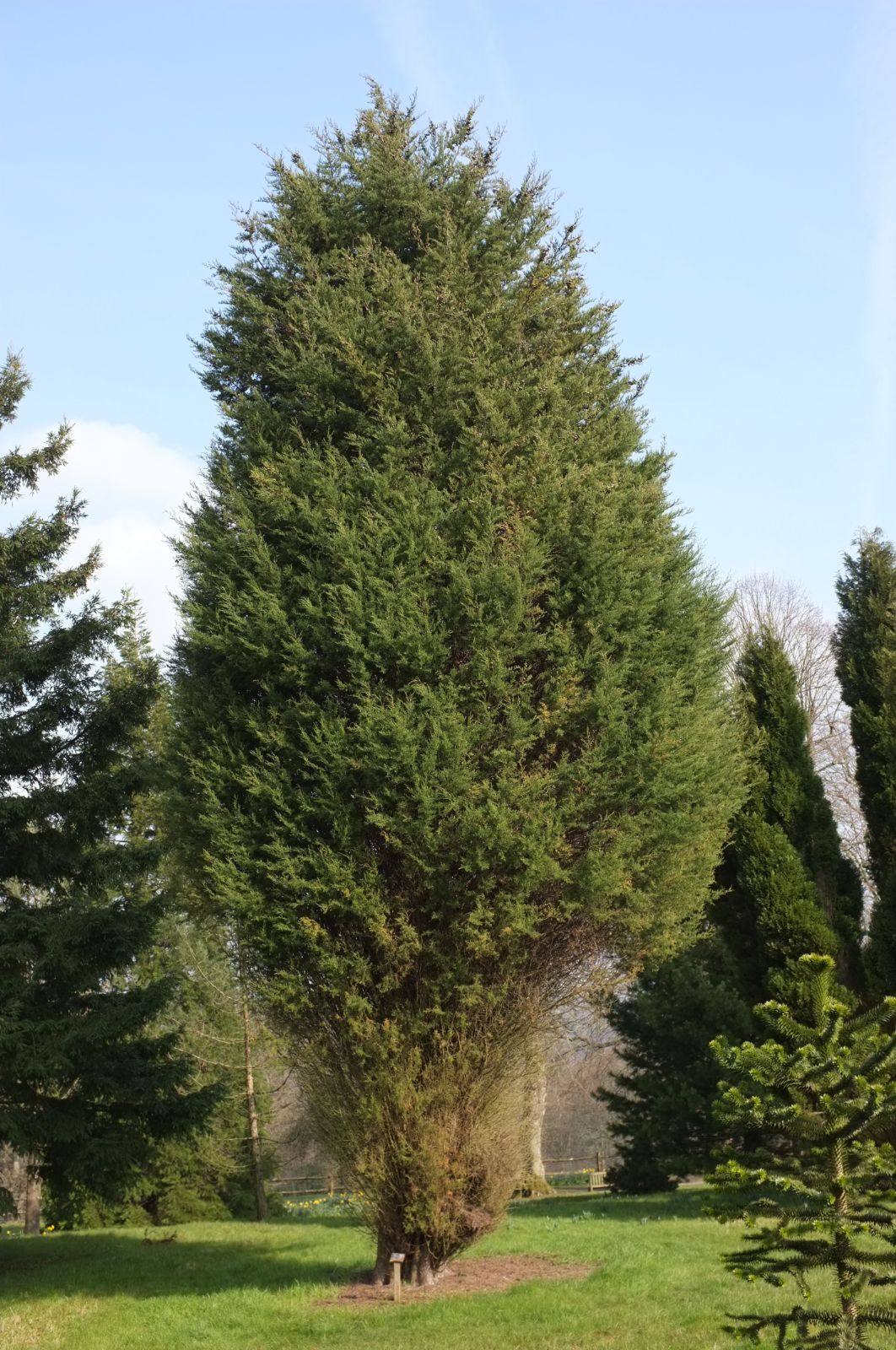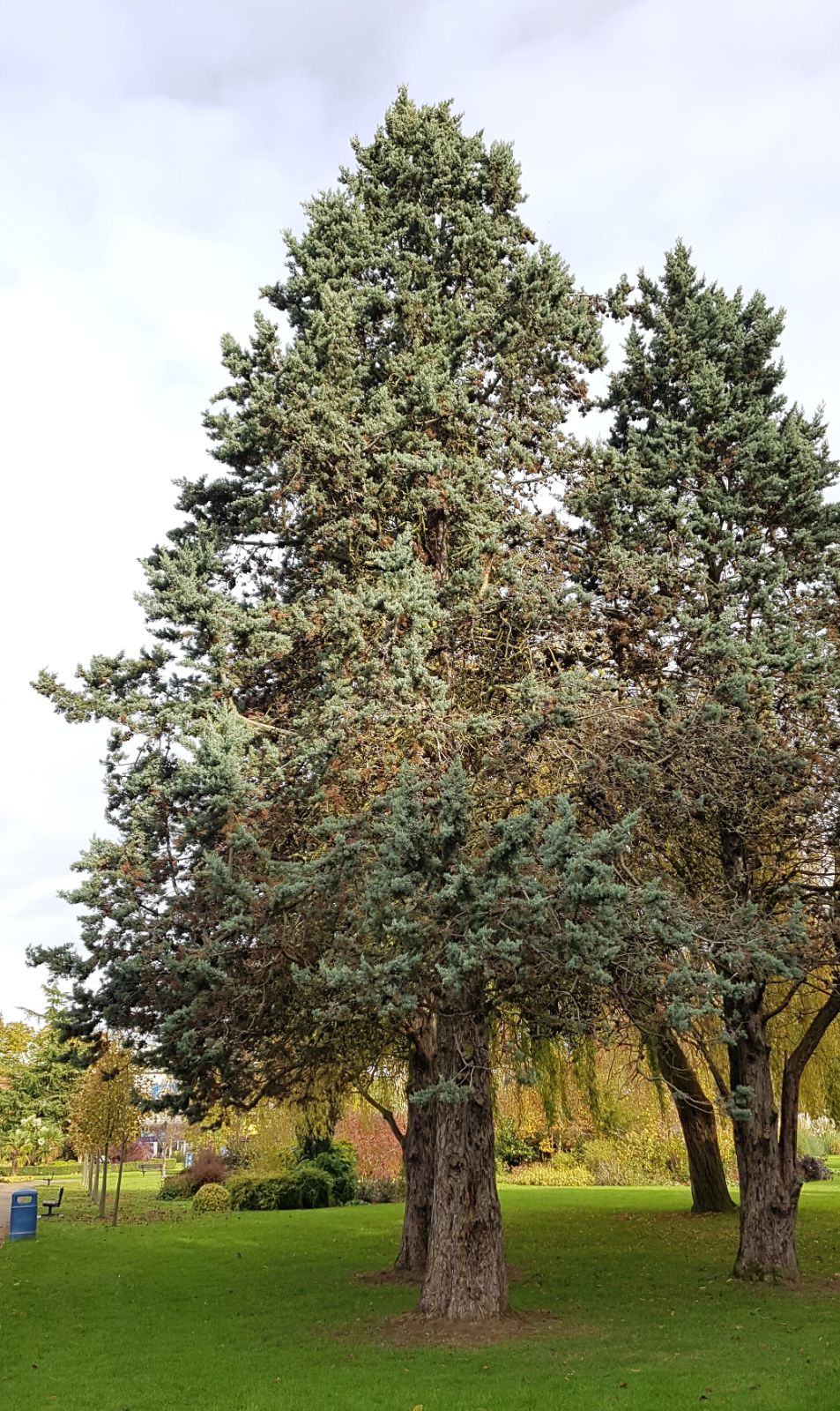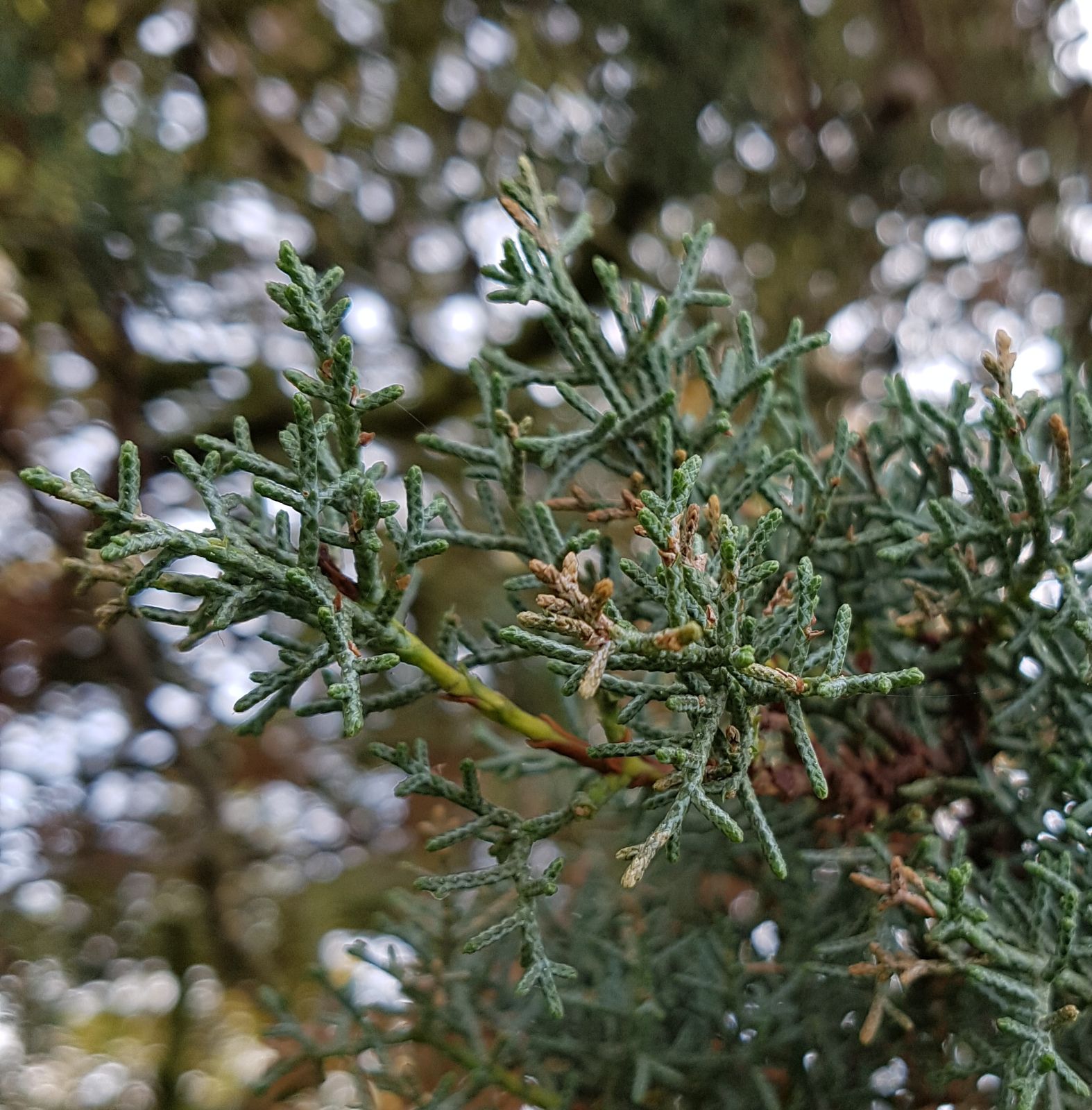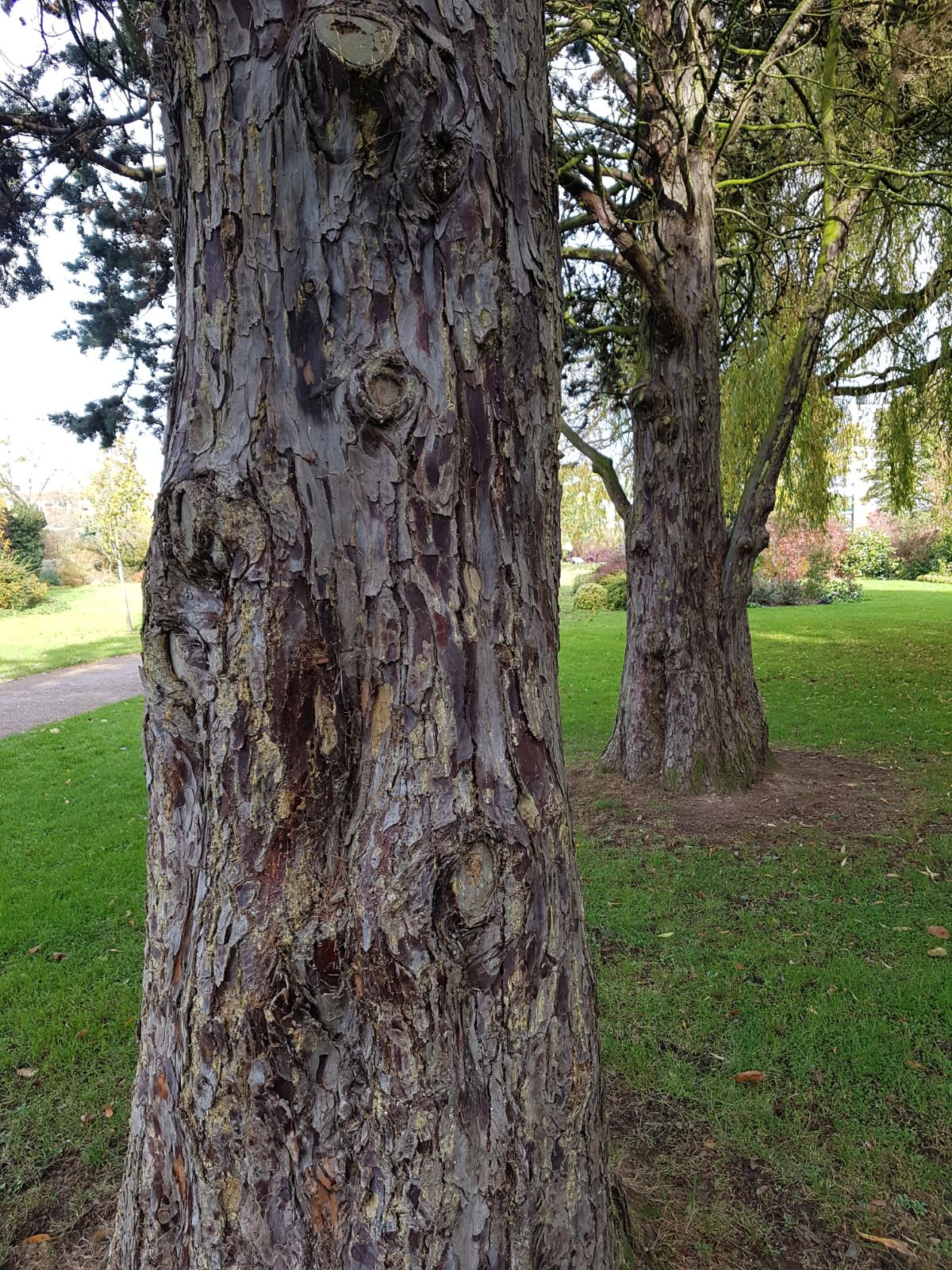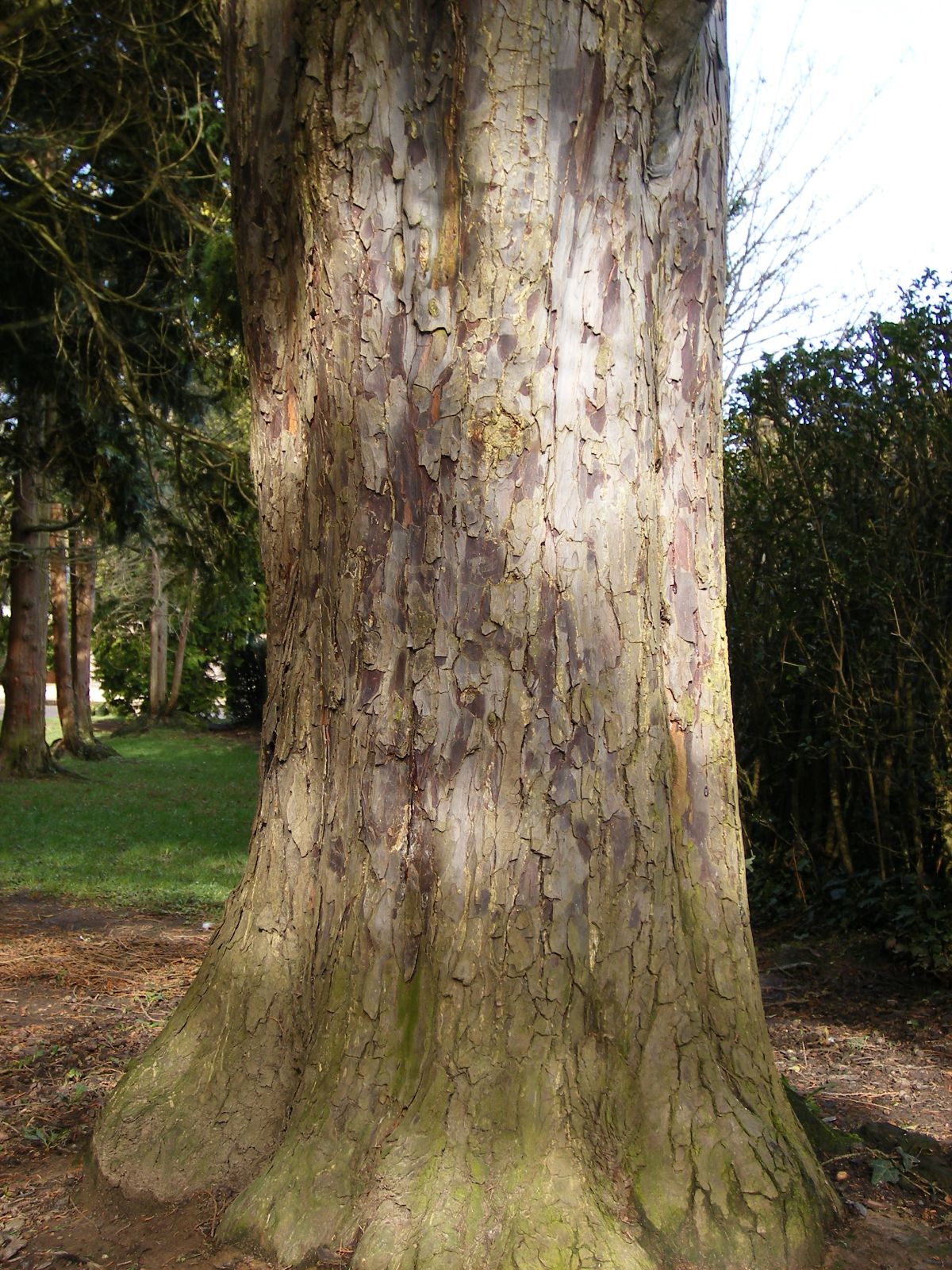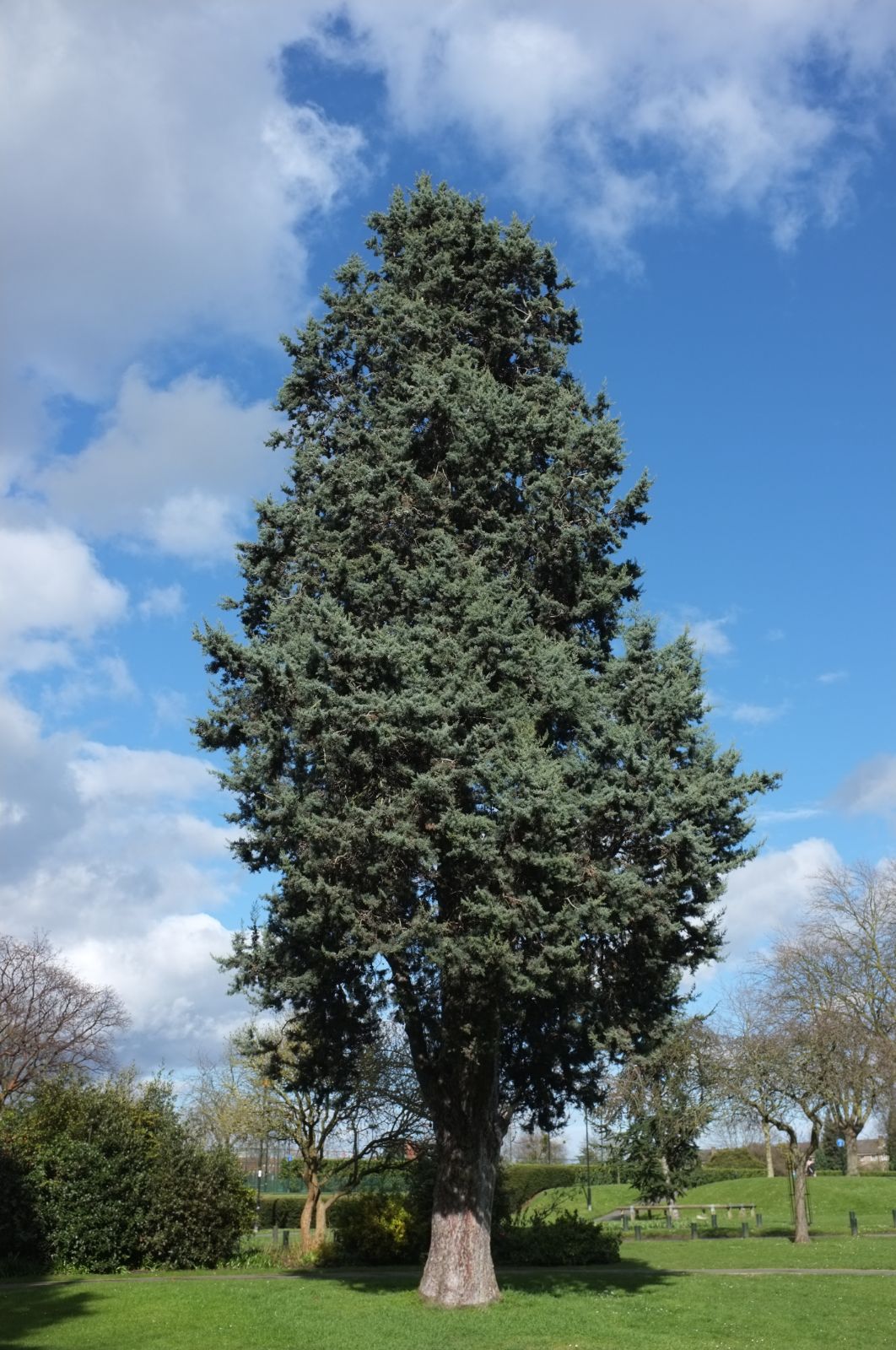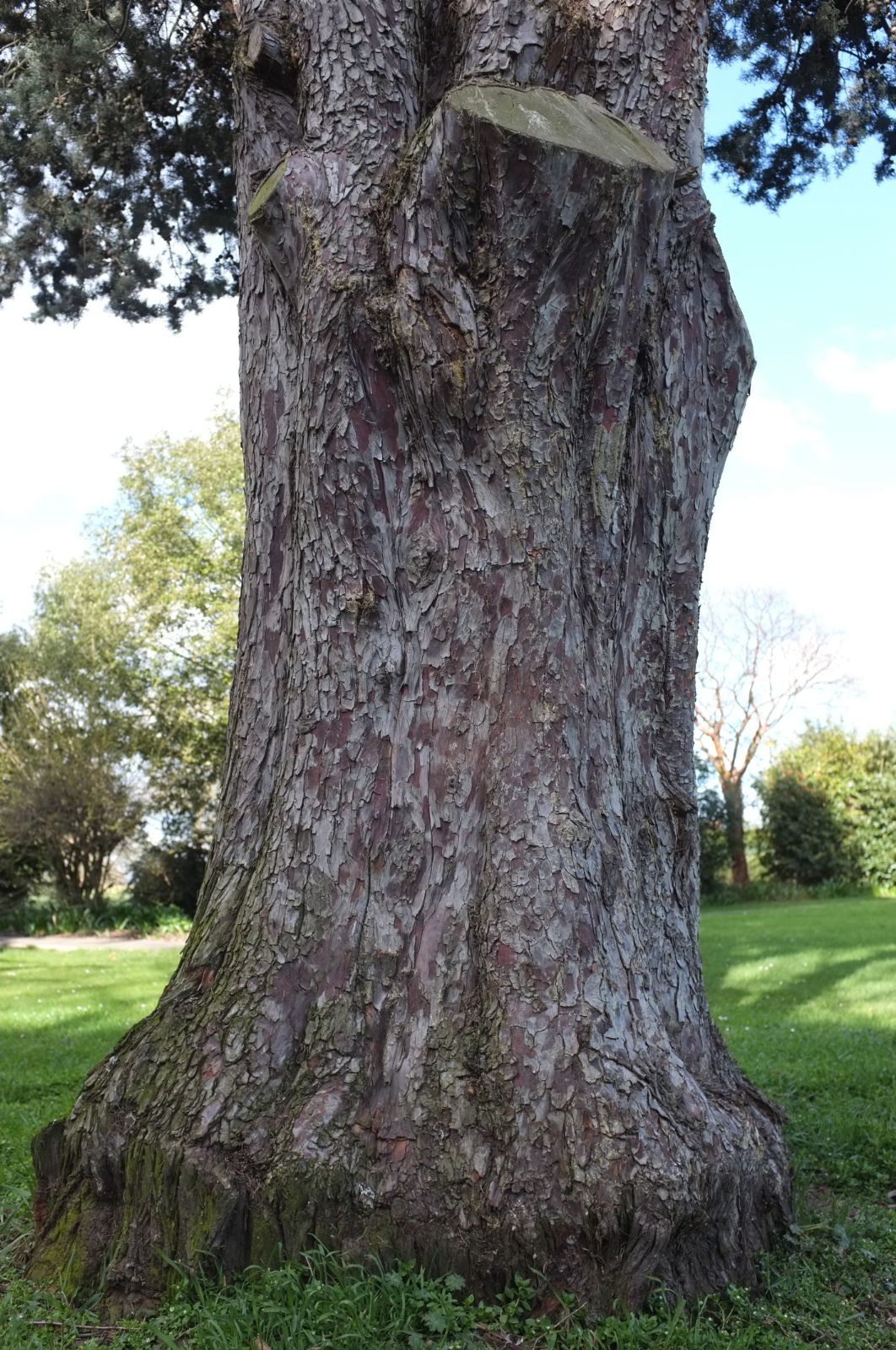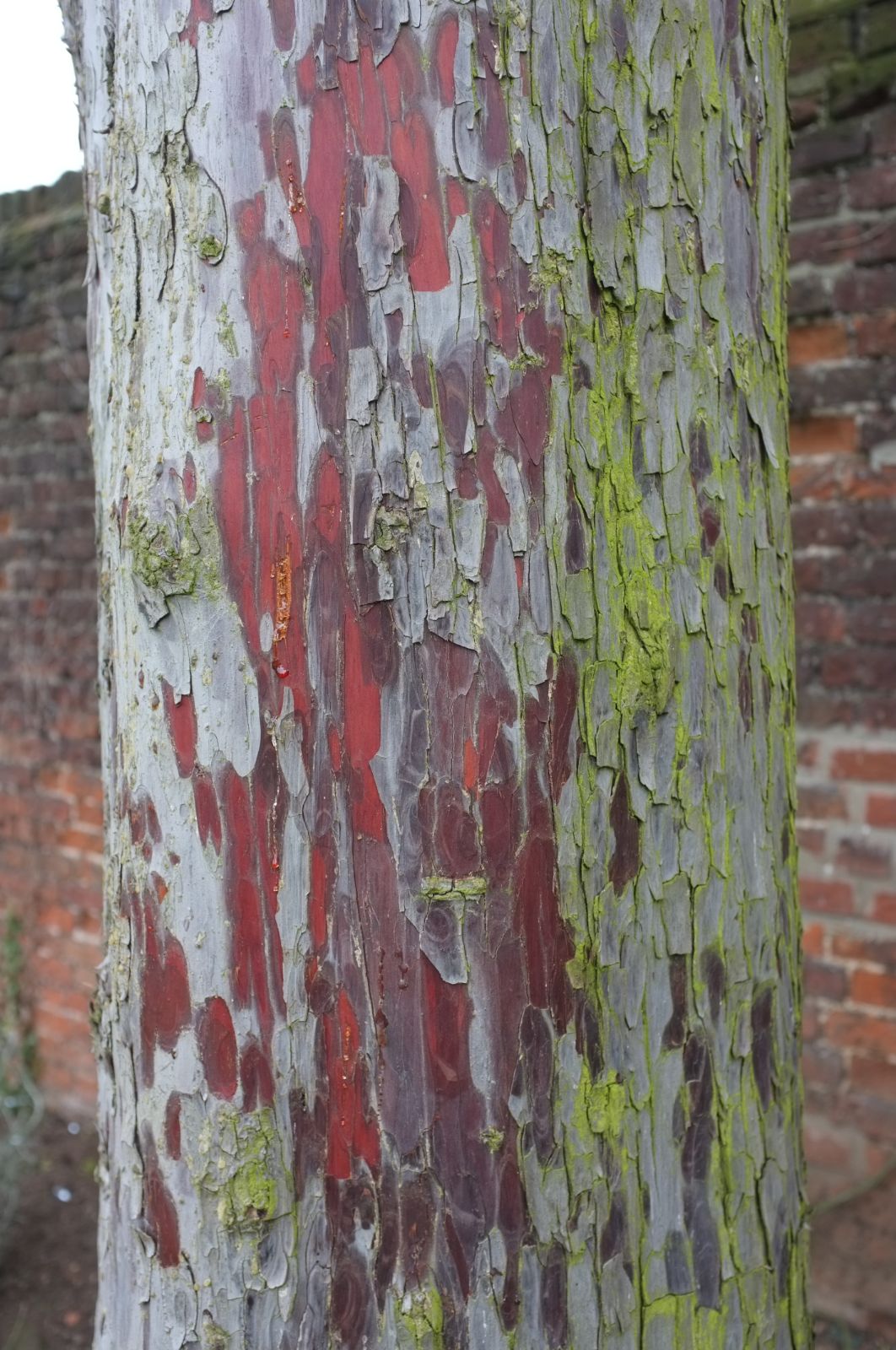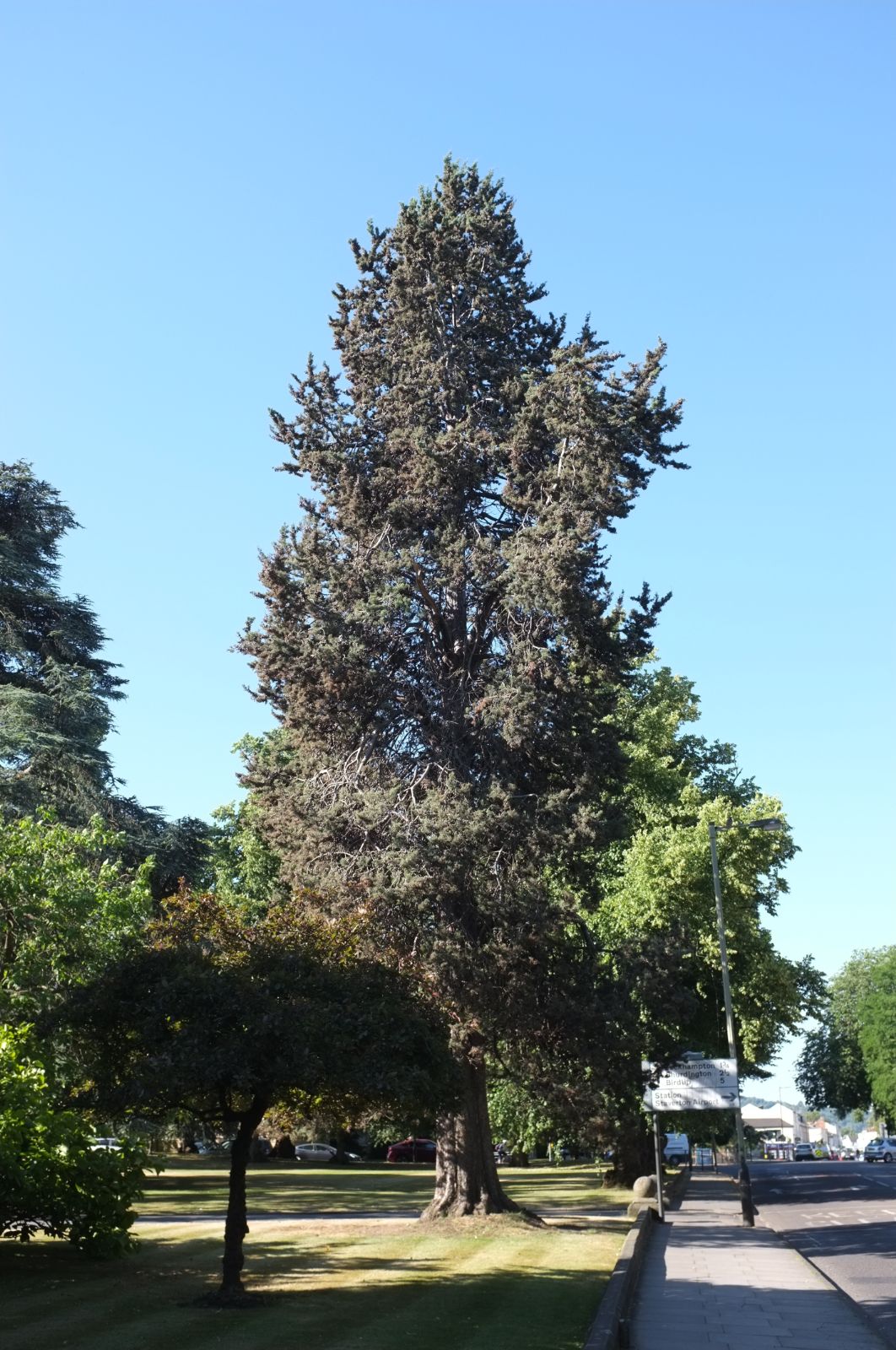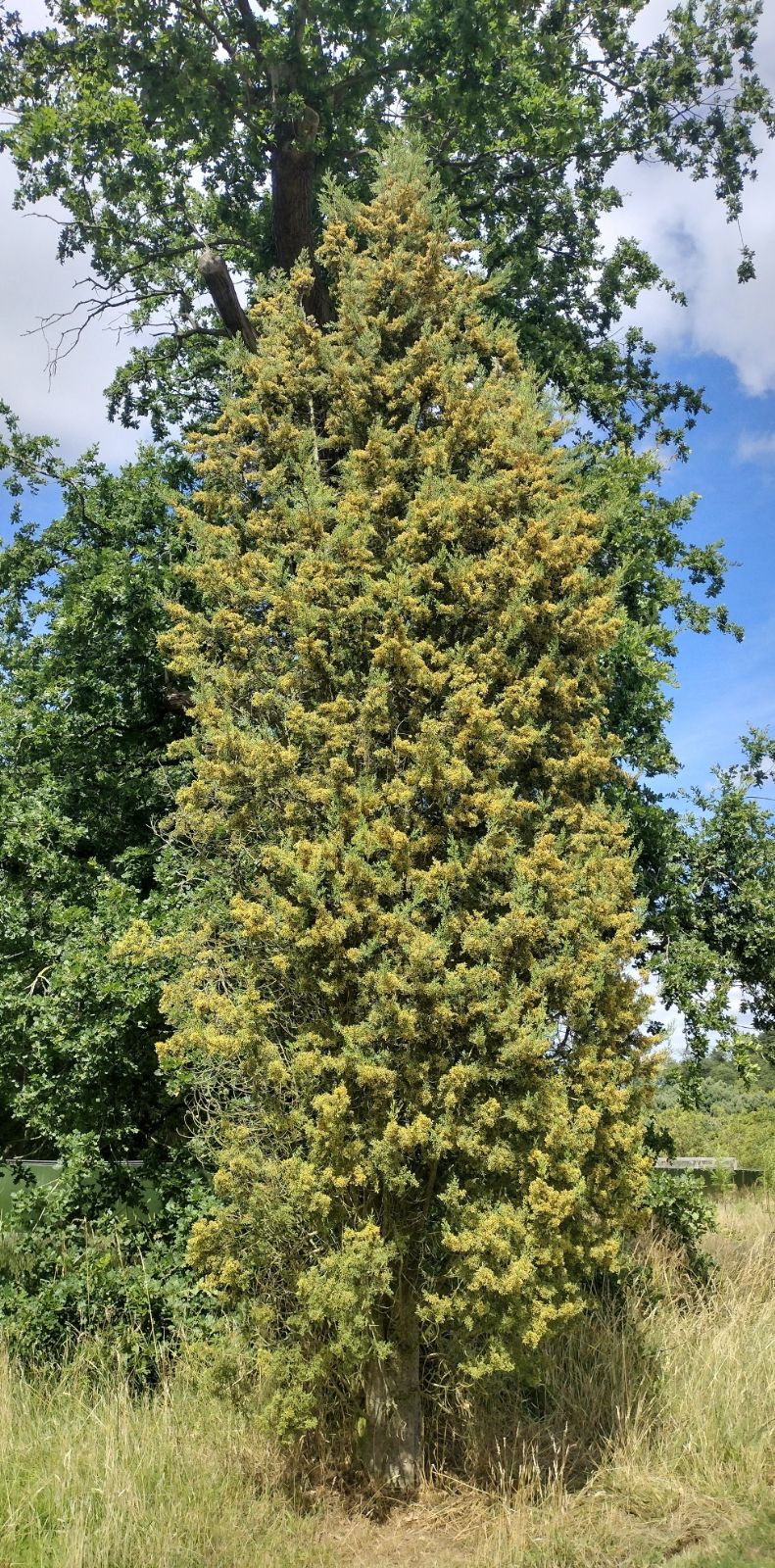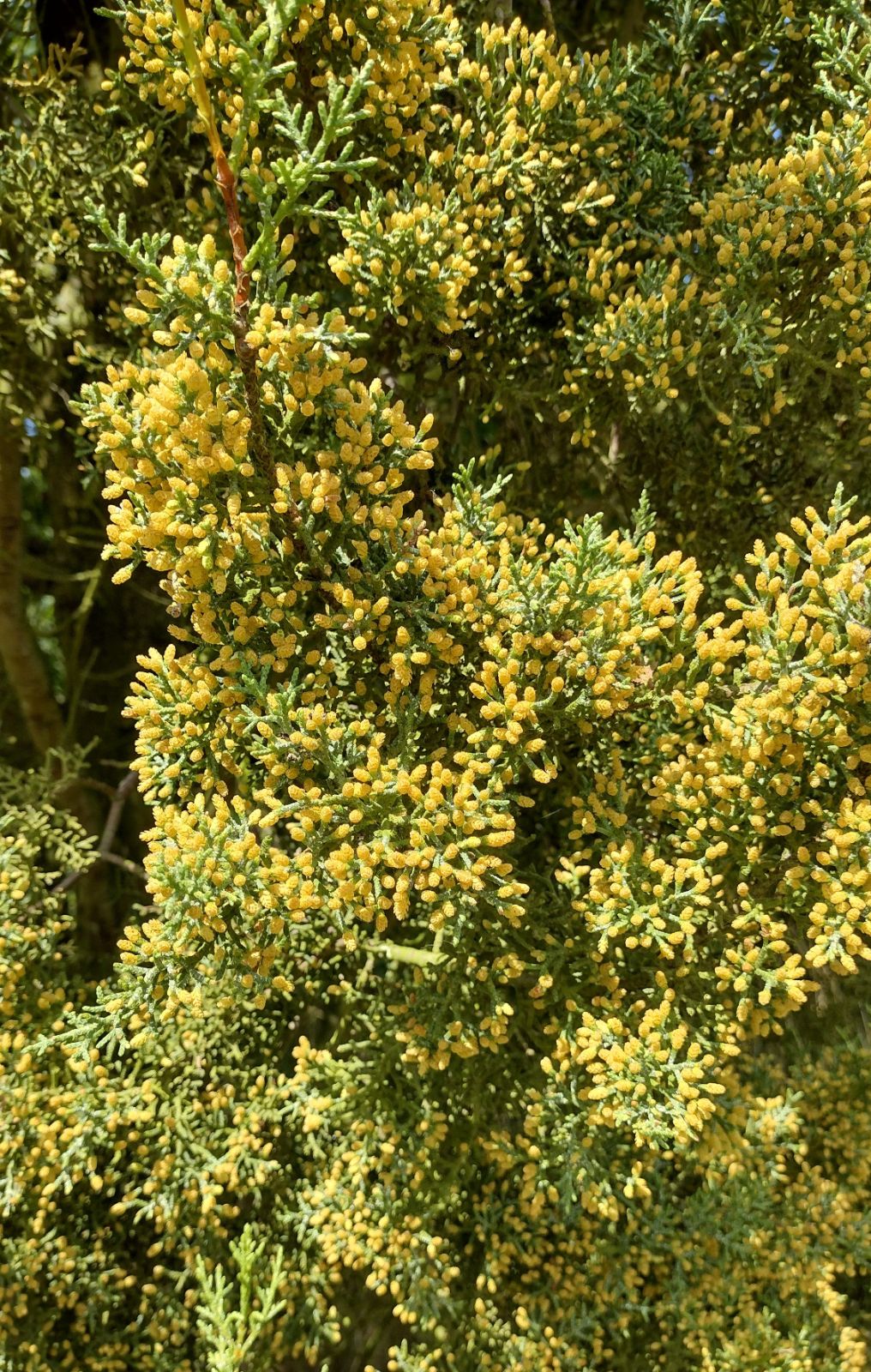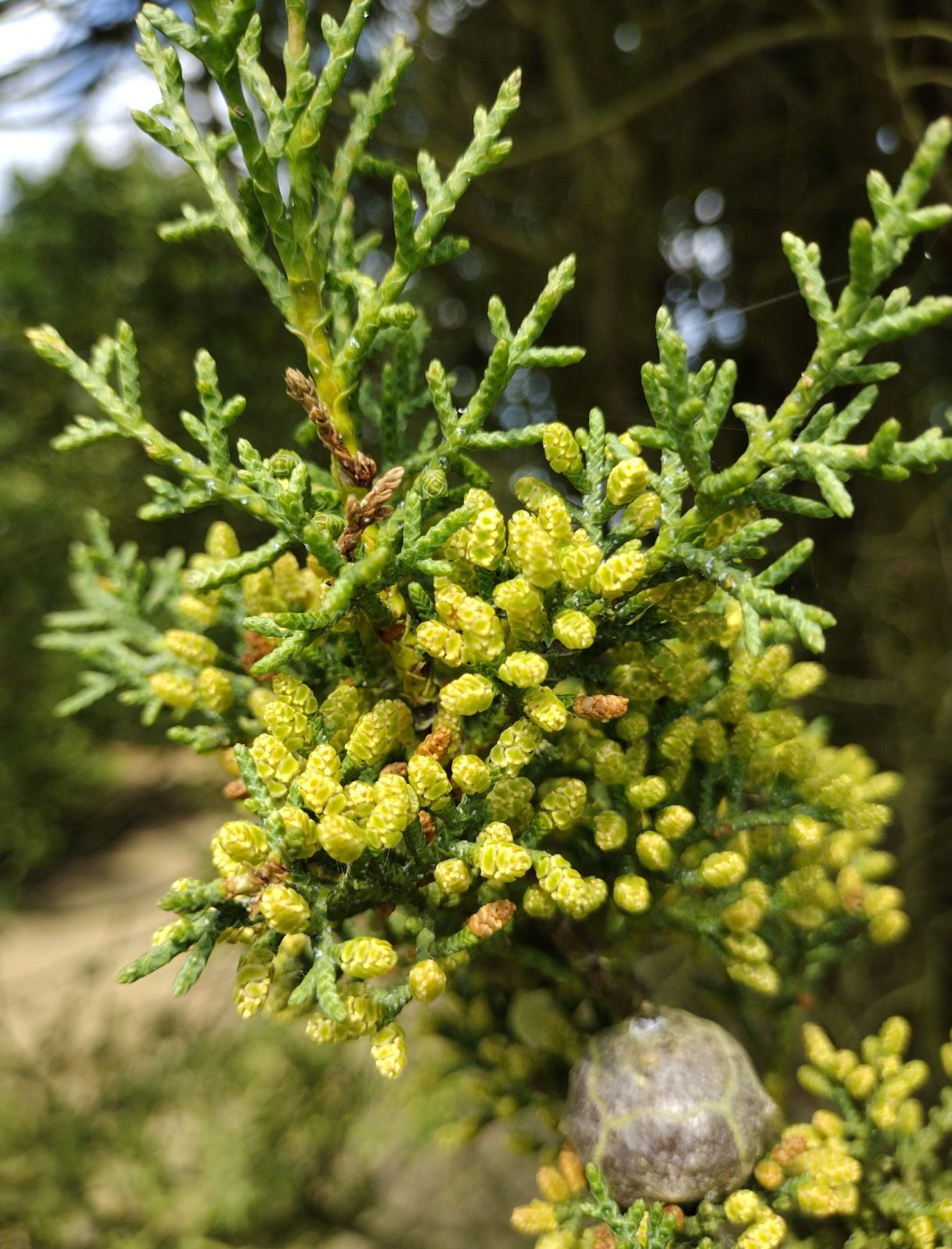Cupressus arizonica
Credits
Article from Bean's Trees and Shrubs Hardy in the British Isles
Article from New Trees by John Grimshaw & Ross Bayton
Recommended citation
'Cupressus arizonica' from the website Trees and Shrubs Online (treesandshrubsonline.
Infraspecifics
Other taxa in genus
- Cupressus austrotibetica
- Cupressus bakeri
- Cupressus cashmeriana
- Cupressus chengiana
- Cupressus corneyana
- Cupressus duclouxiana
- Cupressus dupreziana
- Cupressus forbesii
- Cupressus funebris
- Cupressus gigantea
- Cupressus goveniana
- Cupressus himalaica
- Cupressus lusitanica
- Cupressus macnabiana
- Cupressus macrocarpa
- Cupressus sargentii
- Cupressus sempervirens
- Cupressus torulosa
A tree to 75 ft in the wild state (sometimes taller in favoured localities); bark on young trees red, smooth, peeling in thin flakes, on mature trees dark brown, furrowed and fibrous. Leaves closely overlapping and scale-like, pale green to grey-green, more rarely blue-green, acutely pointed, about 1⁄16 in. long; resin-pits usually inconspicuous and inactive. Branchlets irregularly arranged, the final subdivisions four-sided, 1⁄20 in. in diameter. Cones short-stalked, globose, 3⁄4 to 1 in. in diameter, glaucous; scales six (rarely eight), slightly rising towards the middle, where there is a pyramidal, pointed boss.
Native of the S.W. United States and N. Mexico (where it may intergrade with the closely allied C. lusitanica); discovered by Greene in 1880 in S.E. Arizona and also found in S.W. New Mexico. Most of the trees cultivated in Europe as C. arizonica or “var. bonita” belong to the following species, which is a close ally and not recognised by all authorities:
From the Supplement (Vol. V)
specimens: Borde Hill, Sussex, by Kitchen Garden, 62 × 43⁄4 ft (1978); Exbury, Hants, 65 × 53⁄4 ft (1978); Westonbirt House, Glos., a fine tree, 72 × 51⁄2 ft (1982); Hergest Croft, Heref., in Park Wood, 66 × 51⁄2 ft (1978); Alton Towers, Staffs., 56 × 71⁄2 ft at 1 ft (1974); Stanage Park, Powys, 66 × 6 ft (1980); Mount Usher, C. Wicklow, Eire, 62 × 63⁄4 ft (1975); Avondale, Co. Wicklow, Eire, 82 × 73⁄4 ft (1980).
C. glabra. – This species is distinguished from C. arizonica not only by its grey or silvery glaucous foliage, but also by its blistering and flaking bark, which in its relative is stringy. It is interesting that early this century Elwes and Henry mentioned glaucous-leaved forms of C. arizonica growing in France (Angers and Montpelier) and in Italy (Rovelli’s nursery at Pallanza). These were almost certainly C. glabra, but they knew of no similar trees in Britain. C. glabra is very hardy, and also drought-resistant.
specimens: Royal Horticultural Society’s Garden, Wisley, Surrey, 72 × 51⁄2 ft (1983); Exbury, Hants, 68 × 51⁄4 ft (1978); Stratford Park, Glos., 75 × 41⁄4 ft (1984); Bath Road, Cheltenham, Glos., 56 × 51⁄4 ft (1979); Royal Victoria Park, Bath, 79 × 53⁄4 ft (1984); Henrietta Park, Bath, 68 × 41⁄4 ft (1981); Leighton Hall, Powys, 60 × 51⁄2 ft (1984); Bulkeley Mill, Gwyn., 62 × 71⁄4 ft (1984); Powerscourt, Co. Wicklow, Eire, 80 × 71⁄2 ft (1980).
The clones ‘Conica’ and ‘Pyramidalis’, although similar, are not identical. The latter is somewhat broader than the former, and more silvery glaucous. Of neither has the history been ascertained. The cultivar-name ‘Pyramidalis’ apparently starts in the Hillier catalogue for 1928. The Dutch dendrologist den Ouden mentions ‘Conica’ in a work on conifers published in 1949, but the name was current in the trade (as C. arizonica conica). It was probably first distributed by a French or Italian nursery. To complicate matters, there is also ‘Glauca’, described in 1916 as being of conical habit, with juvenile, glaucous blue foliage.
In Britain, the commonest clone by far is ‘Pyramidalis’, of which the following examples have been recorded: University Botanic Garden, Cambridge, pl. 1937, 50 × 31⁄4 ft (1982); Silwood Park, Berks., 46 × 33⁄4 ft (1982); Brynderwyn, Powys, pl. 1936, 52 × 41⁄2 ft (1977); Cathays Park, Cardiff, 50 × 41⁄2 ft (1980).
From New Trees
Cupressus arizonica Greene
Five varieties of Cupressus arizonica are recognised by Farjon (2001, 2005c), though prior to the revision by Little (1966) they were all regarded as separate species. The morphological characters that separate the varieties (bark colour and texture, leaf resin glands and leaf colour, cone serotiny) intergrade and may be the result of ecological factors. For these reasons, Watson & Eckenwalder (1993) employ a conservative taxonomic concept, recognising no varieties. Cupressus arizonica (including vars. arizonica, glabra and stephensonii) was described by Bean (B799, S199) and Krüssmann (K103). Although the species is a commonly grown garden plant, a key to the currently accepted varieties is provided below, adapted from Little (1966). All seem to be hardy and easy to grow wherever C. arizonica can be cultivated.
| 1a. | Bark of mature trees grey or dark brown, rough and furrowed | 2 |
| 1b. | Bark of mature trees reddish brown, smooth, peeling in thin, curling plates | 4 |
| 2a. | Cone scales open at maturity; Mexico (Baja California Norte) (see K105) | var. montana (Wiggins) Little |
| 2b. | Cones serotinous | 3 |
| 3a. | Leaf resin glands conspicuous and active; USA (California: Piute Mts.) (see K105) | var. nevadensis (Abrams) Little |
| 3b. | Leaf resin glands absent or inactive, rarely active; Mexico (Chihuahua, Coahuila, Durango, Tamaulipas, Zacatecas) (see B799, K103) | var. arizonica |
| 4a. | Leaf resin glands inactive or slightly active; seeds usually over 5 mm long, not glaucous; Mexico (Baja California Norte), USA (California: Cuyamaca Mts.) (see B800, K105) | var. stephensonii (C.B. Wolf) Little |
| 4b. | Leaf resin glands very active, resulting in white flecks of resin on the foliage; seeds usually 4–5 mm long, glaucous; USA (Arizona: Coconino, Gila, Maricopa, Yavapai Counties) (see B799, S199, K103) | var. glabra (Sudw.) Little |
C glabra Sudw.
Synonyms
C. arizonica var. bonita Hort. and of many authors, not Lemm
This species occupies parts of Arizona well to the west of C. arizonica, from Coconino Co. to the Mazatzal Mountains in Gila Co. It is a dense, bushy tree growing 45 to 60 ft high in the wild state, with a spreading crown and often lacking a central leader. The bark remains reddish, thin and smooth even on mature trees, and is shed in thin strips or plates (but becomes close on very old trees). The leaves are much greyer on the average than in C. arizonica, with conspicuous resin-secreting glands on the back. Some trees are strongly glaucous, especially when young and vigorous. The cones are usually larger than in C. arizonica and the seeds glaucous.Many botanists have identified C. glabra with C. arizonica var. bonita Lemm., but C. B. Wolf has pointed out this variety differs in no respect from typical C. arizonica.Owing to the confusion between the two species described above, the date of introduction of neither is known for certain. The seed sent by the Arnold Arboretum in 1882 is said to have been C. arizonica but may equally well have been C. glabra, which was described many years later. But the seed distributed by Purpus around 1890 was apparently collected in New Mexico, well within the range of C. arizonica. The trees cultivated in this country (most of which are probably C. glabra) are quite hardy and have reached heights of 60 to 75 ft and girths of 3{3/4} to 5 ft.The beautiful form of the Arizona cypress so common in Italian gardens is usually known as C. arizonica conica (or pyramidalis). It is of narrowly conical habit, with blue-glaucous leaves. Although said to be tender in Central Europe it appears to be quite hardy in this country.
var. stephensonii (C.B. Wolf) Little
This rare taxon is allied to C. arizonica var. glabra but is less glandular and with smaller leaves (about {1/25} in. long). Confined to a small area in San Diego Co., California, and known as the Cuyamaca cypress.

